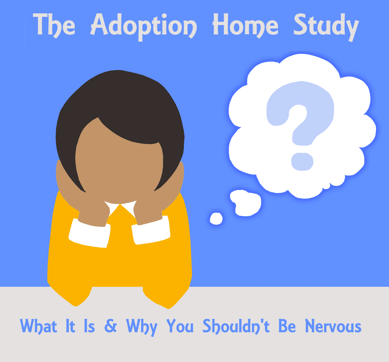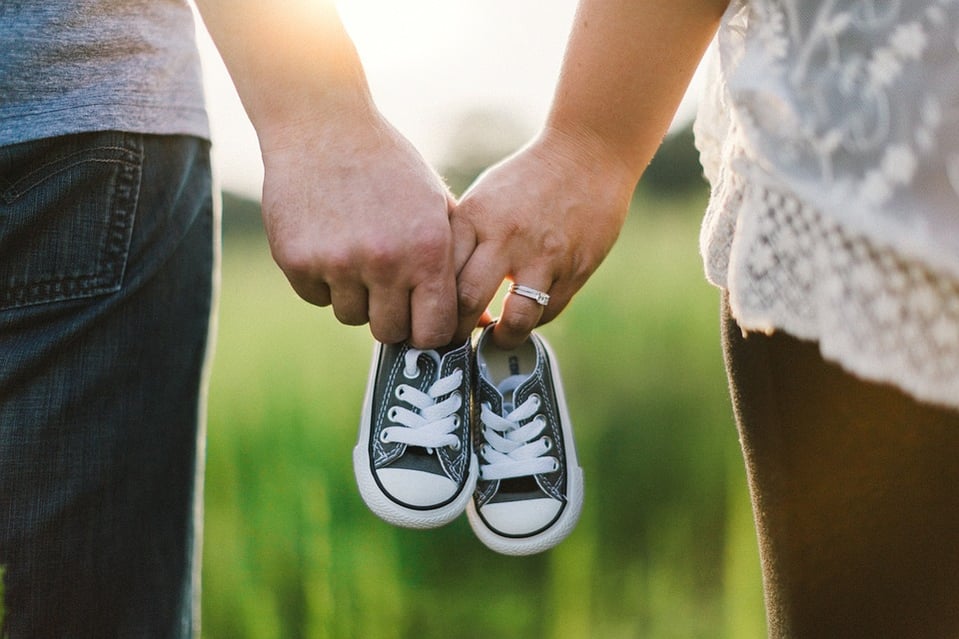So, you’ve decided to adopt and you keep hearing about this “home study” you need to have done. What is it? How long does it take? What’s involved? How much does the social worker need to know about us, and is she going to go through our whole house, closets, cabinets and all?

Prospective adoptive parents usually have lots of questions about the homestudy, and are nervous at first. After all, a social worker is going to come to their house, poke around, interview them, and make an official decision to recommend or not recommend them to be adoptive parents. Who WOULDN’T be nervous?
The good news is there’s very little reason to be anxious about the home study process and the home visit. While it sounds scary and intense, it’s really not. The social worker won’t be coming into your home with white gloves to see if you dust your closet shelves and polish your basement floors. They won’t look in any cabinets except where you store your cleaning supplies (to make sure they are stored in a child-proof way). They won’t ask hard-ball questions and exhaustively investigate every dark corner of your life and your home. Really, what the social worker is there to do is make sure your home is child-proof and safe, has room for a child, and that you are good people. All you need to do is be open, be yourself, and listen.
There is some prep you can do to child-proof your home and make things safer, but if you miss something, your social worker will just ask that you fix it and send them a picture of it fixed. Say, for example, you have a woodstove you never use, so you’ve never thought about putting a safety gate around it. Or you don’t have kids yet, so you’ve never thought about putting a latch on the basement door that would be out-of-reach for a child. You won’t have points deducted- you’ll just have to get that gate installed or put the latch on the door and email your social worker a photo of the stove or door within a reasonable time period.
Ok, so now that you’re not nervous about the home visit anymore (right?), what other things do you need to do? How long does the homestudy process take? Depending on your family’s needs and the country you are planning to adopt from, a home study investigation can typically be completed within 6 weeks to 4 months.
To successfully complete a home study investigation prospective adoptive parent(s) must complete a series of tasks. It’s a long list, but if you take it one step at a time and are patient, you’ll get it done, no problem.
1) Apply for Services: You must research, select and apply to a home study provider authorized or licensed in your state of residence. (like us, Family Connections, Inc. in New York).
2) Obtain Child Abuse & Maltreatment History Reports: You will be asked to provide information (names, dates of birth, addresses) for you and any adult household members to the home study provider or court so the provider or court may obtain child abuse and maltreatment history reports; if any adult person in the household lived outside of the United States, that individual will be required to obtain child abuse and maltreatment history reports from that country(ies) for the home study provider (if the country has a child abuse registry)(if the country does not have a registry, the applicant must provide proof that the country does not have a child abuse registry to the home study provider).
3) Obtain Vulnerable Persons Abuse and Maltreatment Screening Results: You will need to sign a release of information document that permits the home study investigator to request the screening through the New York State Justice Center for the Protection of People with Special Needs for you and any adult household members (if any).
4) Acquire Criminal History Reports: You and any adult household members will need an appointment to get fingerprinted so the home study provider or court may obtain state and federal criminal history reports; if any adult person in the household lived outside of the United States, that individual will be required to obtain a criminal history from that country(ies) (if available) for the home study provider.
5) Complete Medical Examinations: You will need to have a medical examination, every adult household member and every child living in the home will also need to have a completed exam and submit the medical report to the home study provider.
6) Request Personal References: You will need to ask three to five friends, co-workers, or clergy who know you will to write a letter of reference to be submitted to the home study provider. We suggest you ask for five references to guarantee the receipt of at least three.
7) Complete Face-to-Face Interviews: An adoption Social Worker will visit you for a face to face visit to interview you and discuss your adoption plans..
8) Conduct Home Visit/Inspection: The adoption Social Worker will visit your home and complete an evaluation of the home’s safety and suitability for a child(ren).
9) Finish Adoption Training: You will need to complete training as indicated by the home study provider and international adoption placement agency (if any).
10) Submit Home Study Documentation: You will need to complete and provide the required home study investigation paperwork to the home study provider. In New York State, the documents may include, but are not limited too:
- Child abuse and maltreatment informational form (name, dates of birth, and addresses) and release of information agreement for child abuse and maltreatment review (a release so States may provide the results of their child abuse and maltreatment history search for each prospective adoptive parents and adult household member to the home study provider)
- Criminal history release of information agreement (a release so that New York State may provide the results of the criminal history search to the home study provider)
- Sworn statements of criminal history for each prospective adoptive parent and all adult household members
- Medical reports for each prospective adoptive parent, all adult household members, and all children living in the home
- Pictures of family and home
- Informational form containing demographic information (e.g. address, phone number, employer, family members, etc)
- Statement of guardians
- Autobiographies for each prospective adoptive parent
- Adoption questionnaires
- Proof of adoption training
- References
- Financial statement (income, assets, and liabilities) with documentation
- Proof of employment
- Birth certificates of prospective adoptive parents
- Marriage certificate (if any)
- Divorce decrees (if any)
- Passports of prospective adoptive parents (if adopting internationally)
- Duty to fully disclose statement
If you have any questions at all about the process or the paperwork, don’t hesitate to ask your social worker or your agency. They are there to help you get through this long process, and should be happy to assist you however they can. Although the home study process is long and can be nerve-wracking and overwhelming at times, you are not going down this road alone. If you have a good agency and a good social worker, you have all the support you need.



Let Us Know What You Thought about this Post.
Put your Comment Below.